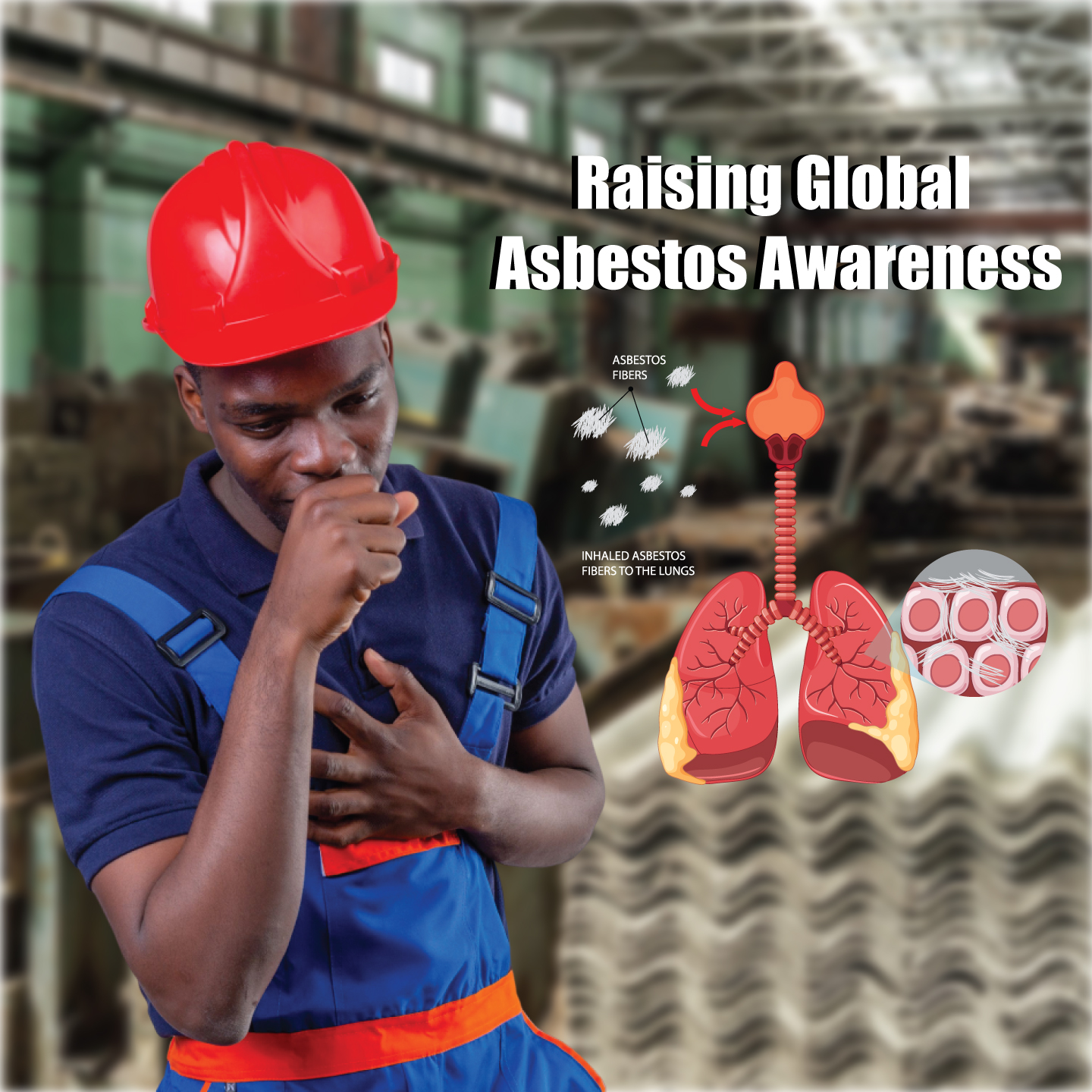Introduction
Asbestos, a naturally occurring mineral, has long been recognized for its versatility and durability, making it a popular choice in various industries. However, the dark side of asbestos has emerged over the years, revealing its devastating impact on human health. Asbestos-related diseases, such as lung cancer, mesothelioma, and asbestosis, have claimed countless lives worldwide. To combat this global health crisis, raising awareness about asbestos hazards is crucial. In this blog post, we delve into the importance of global asbestos awareness and the steps needed to protect lives and promote health.

Understanding Asbestos
Asbestos refers to a group of minerals with fibrous properties, prized for their resistance to heat, fire, and chemicals. Its applications were widespread, particularly in construction materials, electrical insulation, automotive parts, and textiles. However, its microscopic fibers, when released into the air and inhaled, can lead to severe health complications.
The Health Hazards of Asbestos
Exposure to asbestos fibers can cause various illnesses, often with long latency periods, making diagnosis challenging. The primary health hazards associated with asbestos include:
1. Mesothelioma: A rare and aggressive cancer affecting the lining of the lungs, abdomen, or heart. It is primarily caused by asbestos exposure and has a poor prognosis.
2. Lung Cancer: Asbestos exposure increases the risk of developing lung cancer, particularly among smokers. Symptoms may include persistent coughing, chest pain, and difficulty breathing.
3. Asbestosis: Prolonged exposure to asbestos fibers can lead to the scarring of lung tissue, causing progressive shortness of breath and reducing lung function.
4. Other Cancers: Besides mesothelioma and lung cancer, asbestos exposure has been linked to cancers in the larynx, ovary, and other organs.
The Global Asbestos Challenge
The impact of asbestos-related diseases is a worldwide concern, affecting both industrialized and developing nations. Although some countries have implemented bans or strict regulations regarding asbestos use, many others still face significant challenges due to:
1. Legacy Use: Asbestos was extensively used in the past, and its harmful effects continue to emerge decades later. Existing structures and materials containing asbestos pose ongoing risks.
2. Lack of Awareness: Many people, including workers, homeowners, and even healthcare professionals, are unaware of asbestos-related health risks, leading to delayed diagnoses and inadequate preventive measures.
3. Global Trade: Asbestos is still being mined in certain regions and exported to countries with less stringent regulations, perpetuating the cycle of exposure.
Raising Global Asbestos Awareness
Raising awareness about asbestos and its associated risks is crucial to protect lives and promote public health. Here are some essential steps that can contribute to global asbestos awareness:
1. Education and Information: Governments, NGOs, and health organizations should prioritize public education campaigns to inform individuals about the dangers of asbestos and promote preventative actions.
2. Occupational Safety: Employers must provide comprehensive training and protective measures for workers in industries at risk of asbestos exposure. Strict regulations and monitoring are necessary to ensure compliance.
3. Building Inspections and Remediation: Governments should implement rigorous inspection programs to identify asbestos-containing materials in public and private buildings. Proper removal and safe disposal protocols must be enforced.
4. Healthcare Professional Training: Medical practitioners should receive specialized training to recognize and diagnose asbestos-related diseases promptly. Early detection can significantly improve treatment outcomes.
5. International Cooperation: Collaboration among countries is crucial to address the global asbestos challenge. Sharing best practices, research, and resources can lead to effective preventive measures and policies.
Conclusion
Global asbestos awareness is essential to protect individuals from the devastating health consequences of asbestos exposure. By educating the public, implementing stringent regulations, and promoting occupational safety, we can minimize the risks associated with asbestos and work toward a healthier future. It is our collective responsibility to advocate for a complete ban on asbestos and ensure a safer environment for generations to come. Together, let us raise our voices, spread awareness, and take action to eliminate asbestos-related diseases from our world.
Sources:
World Health Organization (WHO) – “Asbestos: elimination of asbestos-related diseases” – https://www.who.int/news-room/fact-sheets/detail/asbestos-elimination-of-asbestos-related-diseases
Environmental Protection Agency (EPA) – “Asbestos” – https://www.epa.gov/asbestos
International Ban Asbestos Secretariat (IBAS) – http://ibasecretariat.org/
American Lung Association – “Asbestos” – https://www.lung.org/clean-air/at-home/indoor-air-pollutants/asbestos
Occupational Safety and Health Administration (OSHA) – “Asbestos” – https://www.osha.gov/SLTC/asbestos/
